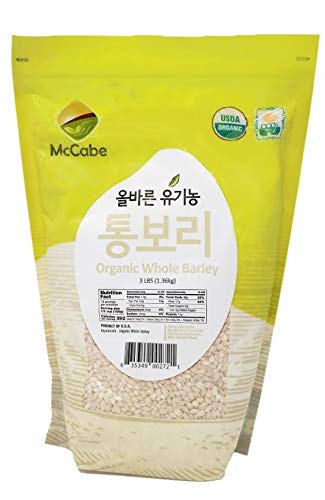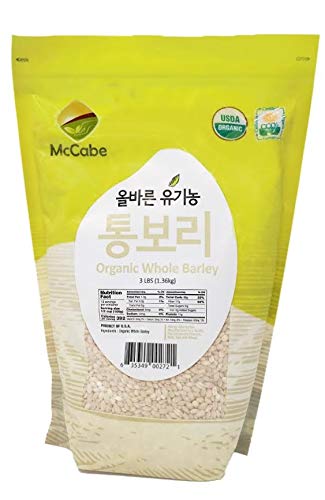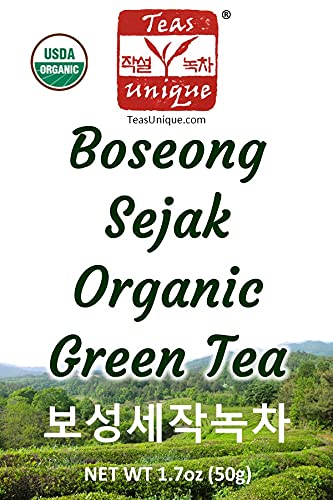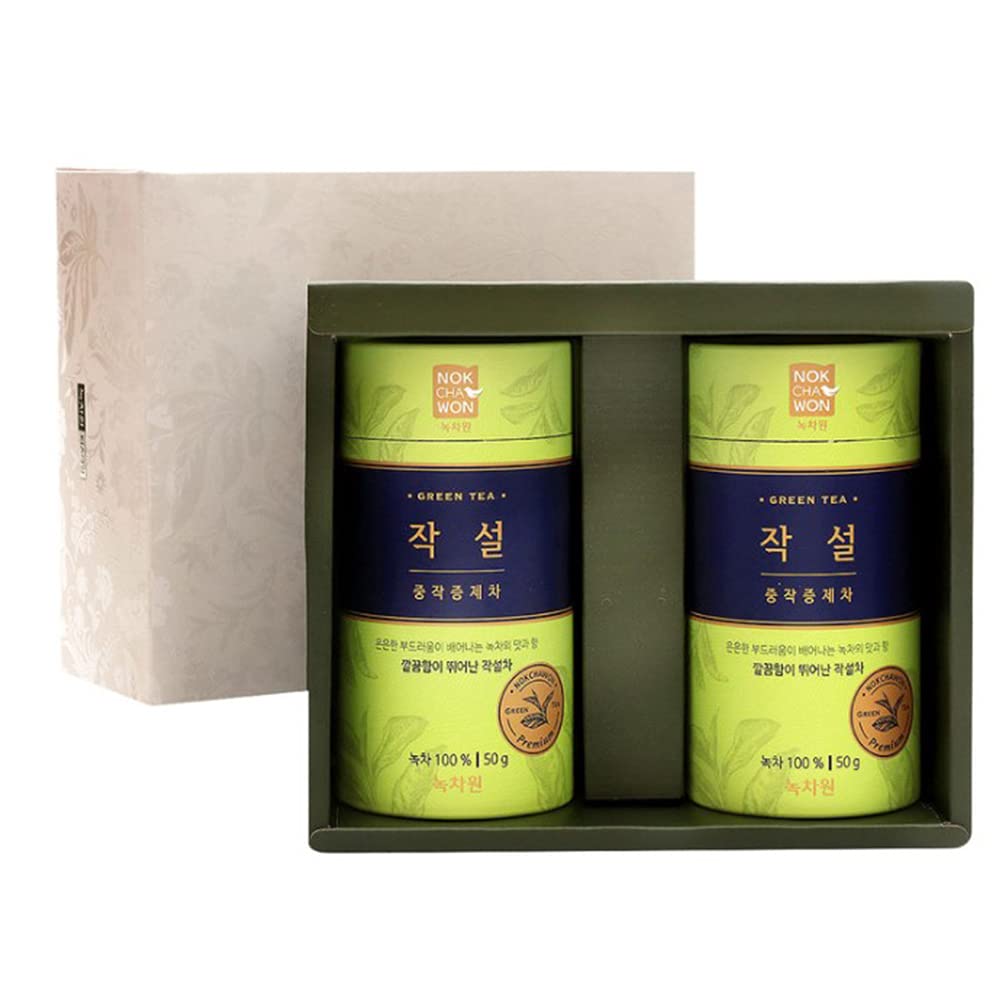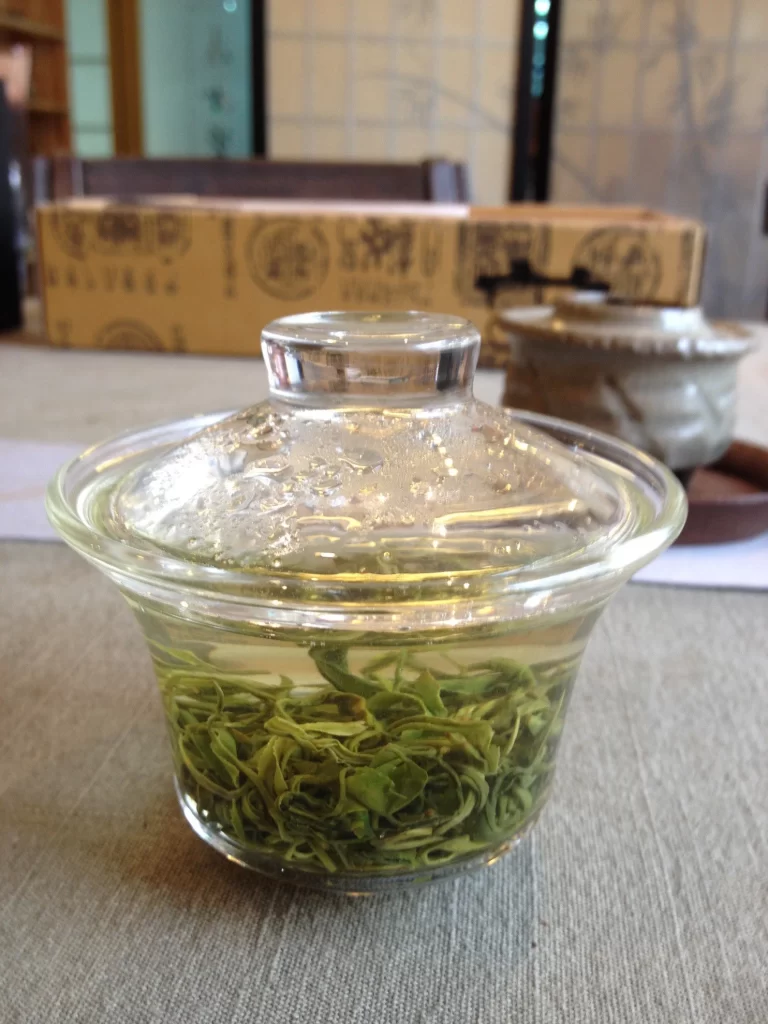We have compiled a list of Korean teas that are widely consumed with (Part 1) or without (Part 2) meals. Each tea’s flavors are explored, as well as how it is grown, made, and enjoyed.
Tea is an important part of Korean culture. It is frequently consumed at home and at restaurants in place of water. Korean teas use a wide variety of plants, including roots, vegetables, flowers, and fruits. Each has unique flavors and health benefits that can be savored on various occasions. Here’s a list of common Korean teas with extensive descriptions so you can find your perfect match for steeping!
This post contains referral links for products we love. Staying Fit With Aeran earns a small commission on these links at no cost to you, and the links will always be marked with an asterisk *.
NOTE: In Korean, “cha” means “tea.”
Teas from Korea that you can drink with your meal
TEA FROM CORN * (OKSUSU CHA)
Oksusu-cha is a common everyday Korean tea that is so mild that it complements a Korean dinner and is chosen by many Koreans above plain water. Corn is an excellent tea plant because of its ability to thrive even in the most arid conditions.
- HOW IT’S MADE – Corn kernels are prepared in the same way as other grains, such as barley or buckwheat, for use as tea ingredients. The dried corn kernels are roasted in a large skillet without oil until black (but not charred!) and stored in the pantry.
- HOW TO ENJOY – Simmer whole kernels of toasted corn in water for 15-20 minutes, similar to brewing barley tea. Allow the brew to cool quickly to retain the aroma. When the tea has turned a wonderful shade of yellow, it is ready to drink. It can be served HOT or COLD. In the winter, I make a large kettle of tea and drink it hot or warm as needed. In the summer, I boil it, let it cool, and then store it in the fridge. Corn tea is a warming beverage. Therefore, it’s ideal for the winter.
- CAFFEINE – ZERO.
- TASTE – Surprisingly, maize tea does not taste like corn. Instead, it has an earthy, gritty, nutty flavor with an ever-so-slight sweetness that complements the hints of roasted flavor well.
WHAT TO BUY – Korean corn teas are sold in bags of whole roasted corn kernels, crushed up and sold in large filter bags meant to be added to a pitcher of water (you can simply add a bag to a pitcher of cold water and let it sit overnight instead of boiling them) OR sold in individual tea bags.
BARLEY * TEA (BORI CHA)
Bori-cha is one of the most popular teas in Korea, especially during the summer. If you frequent Korean restaurants, you’ve probably had this tea before. In the winter, they are typically served hot, whereas in the summer, they are typically served cold.
- HOW IT’S MADE – To make barley into a tea ingredient, it must first be toasted. Barley must be thoroughly prepared because its flavor is entirely dependent on this process. To get the best taste, the grains are toasted until the husk is slightly browned.
- HOW TO ENJOY – Add roasted barley to boiling water and let the brew cool quickly so the aroma does not fade. Also, avoid slowly heating barley because the starch may dissolve and give your tea an unpleasant texture. It can be consumed HOT or COLD. We normally keep a pitcher in the fridge during the summer.
Bori-cha is claimed to improve digestive health but is also a cooling food, making it an excellent tea to drink. ICE COLD in the summer!
- CAFFEINE – ZERO.
- TASTE – Bori-cha Korean barley tea tastes comparable to other grain teas, such as rice tea. You can obviously smell and taste the roasted, possibly even slightly burnt, flavor of the tea. Barley tea is significantly harsher and slightly bitter-tasting than maize tea, but it is also quite refreshing in the heat.
- WHAT TO BUY – Korean barley teas are sold in bags of whole roasted barley grains, huge filter bags designed to be added to a pitcher of water (you can just add them to cold water and let it sit overnight instead of boiling them), or individual tea bags.
CORN SILK * TEA (OKSUSU-SUYEOM-CHA)
Tea made with corn silk: Most people consider corn silk to be a non-edible component of maize rather than a tea ingredient. To avoid the ‘fuzzy’ sensation during cooking, people always end up discarding away corn silk during the processing of corn. As a result, the benefits of cornsilk are sometimes disregarded, but Koreans have decided to drink it as tea.
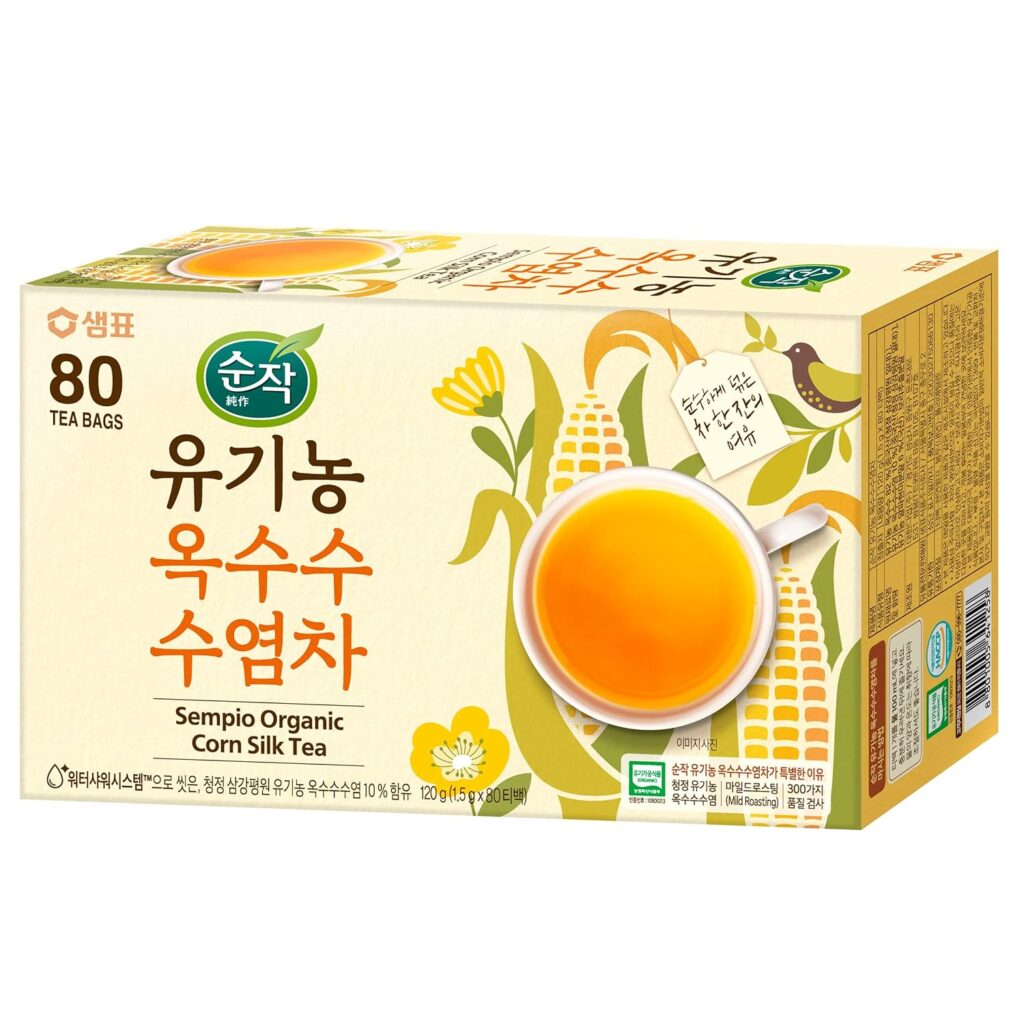
- HOW IT’S MADE – When corn is harvested, farmers remove the corn silk that grows at the top of each ear of corn and wash and dry it in the shade. It is an excellent approach to use this byproduct of maize growing. It should be noted that corn silk is frequently combined with roasted corn to enhance flavor.
- HOW TO ENJOY – Corn silk is an extremely gentle tea ingredient. Allow it to simmer / steep for an extended period of time before consuming.
- CAFFEINE – ZERO.
- TASTE – The tea steeps to a lovely caramel color and has a stronger aroma than it tastes. It has a roasted aroma, comparable to toasted rice, and a nice warming, earthy flavor.
- Corn silk tea is widely acknowledged in Korean culture as a moderate diuretic that can aid in the removal of water retention. Some feel it can also help with UTI, but I don’t believe it can replace medicines and may only help with increased urine.
- WHAT TO BUY – I bought a box of individual Organic Corn Silk tea bags from our Korean grocery store, but you can also buy them online.
BROWN RICE * TEA (HYEONMI-CHA)
Hyeonmi-cha is a roasted brown rice drink. Korean Hyeonmi-cha is identical to Japanese Genmai cha. However, it is produced without green tea leaves. Hyeonmi Nokcha is sometimes made with Korean green tea leaves.
- HOW IT’S MADE – Brown rice is rinsed clean in water before being drained to prepare it for tea. The rice is then dried by being stir-fried in a skillet without oil until it is well-toasted and slightly puffed. This roasting procedure imparts a delicious, nutty flavor.
- HOW TO ENJOY – Bring 5 cups of water to a boil, then add around 2 tablespoons of brown rice tea and let it simmer for a few minutes, but not too long, as the rice will swell and become unpleasant to consume. Pour hot water over the rice and let it steep for a few minutes to consume when the rice is still somewhat crispy.
- CAFFEINE – ZERO.
- TASTE – Hyeonmi-cha has a nutty flavor with a roasted flavor. It tastes similar to Nurungji (scorched rice). It’s excellent for relaxing the stomach after a heavy meal.
Hyeonmi-cha is a Korean folk treatment for dryness that also enhances skin tone.
GREEN TEA (NOK-CHA *)
Green tea, also known as nok-cha, is one of the world’s most well-known and popular teas. Oolong, black and green tea, are all derived from the same plant. Their distinction is determined by whether or not they were fermented. Green tea is not fermented in any way.

- HOW IT’S MADE – Green tea plants are harvested three to four times per year. The earliest initial harvest has the most elegant flavor with the fewest tannins (the bitter aftertaste), but it is also the most expensive, whereas the larger older leaves collected in late summer are relatively reasonable and have more tannins.
Sejak * is the youngest tea leaf, picked annually between April 20th and May 6th. Because the leaves are thin and pointed, it is supposed to resemble the tongue of a sparrow, and thus, it is also known as Jakseolcha.
This is my favorite green tea; it’s gentle, grassy, and a little nutty at first, with a wonderful bittersweet aftertaste. Even after an hour of steeping in water, the tannic flavor remained faint. It also has a very light marine seaweed flavor.
Jungjak * tea leaves are gathered from May 6th through mid-May. The flavors are not as mild as Sejak, but the grassy and bitter aftertaste is stronger than in the first crop.
Daejak * tea leaves are the largest and are gathered till the end of May. Because there is so much more to harvest at this point, it is the most cost-effective of all Korean Green Teas, but it also has the greatest tannic flavor. These are also powdered and used to flavor beverages, rice cakes, and other desserts.
After the leaves are collected, they are heated in order to retain their green color. The leaves are cooked indefinitely until most of the moisture is gone, and they become fairly crispy.
- HOW TO ENJOY – Bring water to a boil, then set aside to cool until it reaches 70-80oC (158-176oF). This is because boiling water causes green tea to burn and become bitter. Allow the tea to steep for a few minutes before drinking.
- CAFFEINE – Of course.
Because green tea contains caffeine, it can be used as a coffee substitute for persons who are sensitive to the high quantities of caffeine found in coffee drinks. Aside from that, green tea is recognized to offer numerous health advantages ranging from cholesterol reduction and heart disease prevention to anti-cancer properties. However, according to NIH data, much of it is unclear at this time due to the small size of the research.
Green tea, on the other hand, is a terrific method for me to unwind and relax without consuming any calories.


